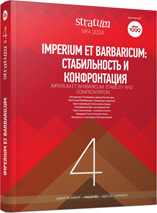«Серебряный Век» Среднего Поочья. К вопросам социальной дифференциации и локации рязано-окской археологической культуры на пересечении речных и сухопутных торговых путей, в первом тысячелетии н. э.
“Silver Age” of the Middle Oka. To the issues of social differentiation and location of the Ryazano-Oka archaeological culture at the intersection of river and land trade routes in the first millennium AD
Author(s): Alexander P. GavrilovSubject(s): History, Archaeology, Ancient World, 6th to 12th Centuries
Published by: Издательский дом Stratum, Университет «Высшая антропологическая школа»
Keywords: Eastern Europe; early Middle Ages; Ryazan Finns; technologies; cultural interactions; social stratification; Ryazan-Oka culture bearers; barbarian kingdom; fur route; Oka; commerce; power centers
Summary/Abstract: The article addresses the reasons behind the Ryazan-Oka archaeological culture’s particular choice of habitat in the first millennium AD as a set of territorial advantages offered by the intersection of the Volga-Oka and Don trade routes. This territory was a key resource and raw material hub for Eastern Europe and a point of optimal contact (accessibility) with the Nistru/Dniester basin, Black Sea, Northern Caucasus, Kama, and Ural regions. All of this led to the formation of the Ryazan-Oka culture's areal, distribution, and influence during the Roman migrations and the Great Migrations. From the second half of the fifth to the middle of the seventh century, there was a period of stability in the microregion, the influx of a huge number of imports, implying the presence of exports from the Middle Oka. Against this background, social differentiation increased, which led to the formation of a more developed social system.
Journal: Stratum plus. Археология и культурная антропология
- Issue Year: 2024
- Issue No: 4
- Page Range: 123-134
- Page Count: 12
- Language: Russian
- Content File-PDF

